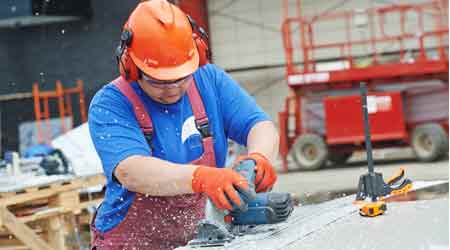Manual Tracking System Helps Manage Power Tool Distribution
Part 3 of a 4-part article on power tool management
Besides the tools the district issues to workers in each trade shop, the department also owns an arsenal of other power tools and equipment that remain in a central location and that workers can sign out for use on a job site. The department uses a manual tracking system to manage these power tools.
“We have created a large board in our material control room (MCR), which is where all of our materials come and go, whether it’s receiving items that we’ve ordered or checking out tools to employees,” Borst says. “The board helps us track the name of the person and date the tools went out and the return date for the tool. The board helps us keep a handle on the tools, and it’s visible and out in the open so everyone can see it. We also have a checkout log for smaller tools — drain snakes and things like that — that has the employee’s name, what they checked out, and a blank for their initials at pick-up and when they return it. Both of those are maintained by our MCR staff in our central office.”
“We’ve discussed (using a computerized system), but we haven’t done that yet. We’re computerized, of course, when it comes to all of our work systems and work orders. But we have not morphed into tool management that way.”
Managing the efficient flow of these tools presents several challenges for Borst, his fellow supervisors and the MCR staff.
“One challenge is that an employee will check out a tool, go to the job site, and use it, but they might not return it promptly,” he says. “So a tool that was issued to an employee might end up in a vehicle because he forgot to bring it back. Then we have to go to that employee and say, ‘You have one of these tools, and you need to bring it back because somebody else needs to use it.’”
Another challenge involves the investment that the tools represent, given the number of facilities and the volume of work the department performs.
“It’s a daunting task to keep track of everything,” Borst says. “There’s the cost factor to make sure that you’ve got up-to-date, current, state-of-the-art tools in order to make sure we’re getting the job done the most efficient way possible. That’s always a challenge just because of the sheer amount of dollars involved.
“We also need to have good communication with our guys so they know that if there is any kind of a problem with a tool, they need to make sure to notify us to bring it back so we can address it, whether it’s a repair or a replacement.”
Related Topics:













